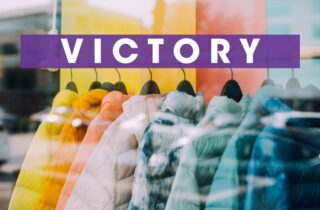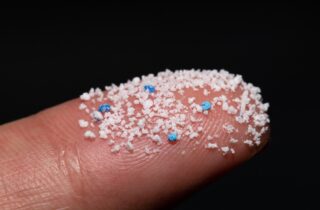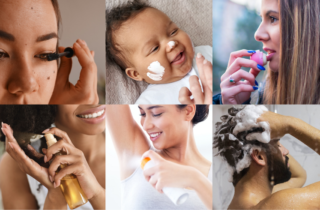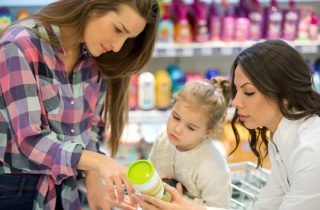Cosmetic Safety for Communities of Color and Professional Salon Workers Act
At a Glance
The Cosmetic Safety for Communities of Color and Professional Salon Workers Act of 2025 (HR4436), introduced in the U.S. House of Representatives by Reps. Jan Schakowsky and Ayana Pressley would protect these vulnerable populations from the unsafe products marketed to them or commonly found in their workplaces.
This bill is part of the Safer Beauty Bill Package, four bills that will make beauty and personal care products safer for all by banning the worst chemicals, requiring disclosure of hazardous chemicals (including fragrance ingredients), protecting women of color and salon workers, and requiring supply chain transparency.
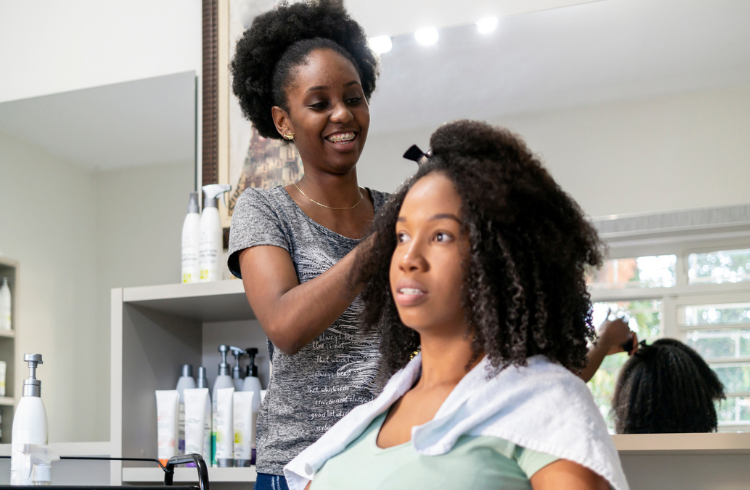
Summary
The Cosmetic Safety for Communities of Color and Professional Salon Workers Act would federally mandate access tosafety data sheets (SDSs) translated into Chinese, Korean, Vietnamese, Spanish and other languages upon request; funding for research grants to identify chemicals of concern in beauty and personal care products marketed to these already vulnerable populations; funding for the development of green chemistry safer alternatives; and funding for two new national resource centers focused on Beauty Justice and Health and Safety Protections for Professional Salon Workers.
Problem
Professional nail, hair, and beauty salon workers and communities of color are over-exposed to hazardous chemicals because of the products they work with, and the toxic products marketed to them. Thousands of industrial chemicals are used to make the personal care and beauty products that communities of color and professional salon workers use every day, and many of these chemicals are linked to serious harm to human health.
Toxic Salon Work
For eight to ten hours a day, nail and hair salon workers are exposed to an array of dangerous chemicals from professional/personal care products, and the cumulative impact of these exposures over time is cause for concern.[ii]
In a population-based retrospective study of cosmetologists and manicurists in California, researchers found that women who work in this industry are at greater risk for adverse birth outcomes and maternal health complications.[iii] A New York survey showed that manicurists experienced reproductive health issues at twice the general population’s rate. They had over double the rate of complications during pregnancy and babies born with birth defects.[iv] Additionally, those working with acrylic nails were more likely to report health problems, such as nose irritation, allergies, skin irritation, stress, pain, coughing, nausea, difficulty breathing, asthma, and miscarriages.[v]
The work environment of hairdressers has also been reported to contain exposures that can harm reproductive health and cause cancer, skin irritation, and allergic diseases.[vi]
Potentially hazardous exposures for nail and hair salon workers come from many different products, including polish hardeners, thinners, plasticizers, bleaches, conditioners, detergents, dyes, fixatives, relaxers, and straighteners that are most often used as commercially-prepared mixtures.[i]
Hazardous chemicals in professional salon products can harm the lungs, cause allergic skin reactions, and are linked to reproductive harm and cancer. Yet, despite decades of warnings about these chemicals from public health officials and the known harm to salon workers, very little innovation toward safer chemistry is evident in the professional salon product industry. Instead, the few harmful ingredients removed from products have been replaced with equally toxic or more toxic alternatives.[ix]
It is often difficult, sometimes even impossible, for salon workers to obtain Safety Data Sheets (SDS), which contain information about the health hazards associated with the salon product ingredients they are working with. Lack of access to Safety Data Sheets is compounded by language barriers that many salon workers experience. For example, in the nail salon industry, 76% of manicurists are Asian, and 79% are foreign-born.
The combination of hazardous chemicals, inadequate access to information, lax regulatory standards, enforcement, and a largely immigrant workforce with cultural and language obstacles underscores the need for stronger federal cosmetic safety protections for this vulnerable population.
Toxic products marketed to women of color
In their personal lives, women of color also suffer from a higher level of exposure to hazardous chemicals in the beauty products aggressively marketed to them, including hair dyes, hair relaxers and straighteners, skin lighteners, feminine douches, and some deodorants. These products contain chemicals linked to breast and ovarian cancer, uterine fibroids, reproductive harm, and more. This toxic exposure is of particular concern to Black women because they purchase and use more beauty products per capita than any other demographic and face many health disparities, including the highest breast cancer mortality rate of any U.S. racial or ethnic group.
Studies show that women of color have higher levels of beauty product-related environmental chemicals in their bodies, and even small exposures to toxic chemicals over time can trigger adverse health consequences.[vii] For instance, a recent NIEHS study found higher rates of breast cancer associated with the use of hair straighteners and permanent hair dye among black women: African American women who regularly dye their hair face a 60% increased risk of breast cancer compared to an 8% increased risk for white women.[viii]
Solution
The Cosmetics Safety for Communities of Color and Professional Salon Workers Act of 2025 would:
1. Create two separate grant programs to research the chemicals of concern in products marketed to communities of color and used by professional beauty, hair, and nail salon workers; the marketing tactics used by companies to sell these products; and develop community and salon education and interventions to respond to the problem.
2. Create a grants program to develop green chemistry solutions to hazardous chemicals in beauty products marketed to women of color and used by professional salon workers.
3. Require increased access to Safety Data Sheets (SDS) by salon owners and salon workers; and translated into Chinese, Korean, Vietnamese, Spanish, and other languages upon request.
4. Authorize the creation of two Centers of Excellence on Cosmetic Safety for Communities of Color and Salon Worker Health and Safety to serve as central clearinghouses for resource materials creation and dissemination, network coordination, public outreach, and education.
5. Direct the FDA to regulate the safety of synthetic braids and require manufacturers that do not meet an established FDA safety standard to have posted on their products and websites a warning label to consumers that “this product does not meet the FDA’s standard of safety.”
For more information, contact:
Janet Nudelman, Breast Cancer Prevention Partners, Janet@BCPP.org
Footnotes
[i] Labrèche F, Forest J, Trottier M, Lalonde M, Simard R. Characterization of chemical exposures in hairdressing salons. Appl Occup Environ Hyg. 2003;18(12):1014–1021. doi: 10.1080/10473220390244667. Pak VM, Powers M, Liu J. Occupational chemical exposures among cosmetologists: risk of reproductive disorders. Workplace Health Saf. 2013;61(12):522–528. doi: 10.1177/216507991306101204.
[ii] Sharma, Preeti et al., (2018). Nail Files: A Study of Nail Salon Workers and Industry in the United States.
[iii] Quach T, Von Behren J, Goldberg D, Layefsky M, Reynolds P. Adverse birth outcomes and maternal complications in licensed cosmetologists and manicurists in California. Int Arch Occup Environ Health. 2014 Dec 14.
[iv] California Healthy Nail Salon Collaborative. (2011). Toxic Beauty No More! Retrieved from https://static 1.squarespace.com/static/5783e9b9be6594e480435ffe/t/58f44a7646c3c4fe785ebe8c/1492404857878 /Nail-Salon-Report-2011.short_.english.pdf.
[v] White, H., Khan, K., Lau, C., Leung, H., Montgomery, D., & Rohlman, D. (2015). Identifying Health and Safety Concerns in Southeast Asian Immigrant Nail Salon Workers. Archives of Environmental & Occupational Health, 70(4), 196–203. doi:10.1080/19338244.2013.853644.
[vi] Quiros-Alcala L, Pollack AZ, Tchangalova N, DeSantiago M, Kavi LKA. Occupational exposures among hair and nail salon workers: a scoping review. Curr Environ Health Rep. 2019;6(4):269–285. doi: 10.1007/s40572-019-00247-3.
[vii] Zota, Ami R, and Bhavna Shamasunder. “The environmental injustice of beauty: framing chemical exposures from beauty products as a health disparities concern.” American journal of obstetrics and gynecology vol. 217,4 (2017): 418.e1-418.e6. doi:10.1016/j.ajog. 2017.07.020.
[viii] Eberle, Carolyn E et al. “Hair dye and chemical straightener use and breast cancer risk in a large US population of black and white women.” International journal of cancer vol. 147,2 (2020): 383-391. doi:10.1002/ijc.32738.
[ix] Women’s Voices for the Earth. (2023, March). Salon Label Report: Exposed Ingredients in Salon Products, Salon Worker Health and Safety. Retrieved from https://womensvoices.org/exposed-ingredients-in-salon-products-salon-worker-health-and-safety/
Types: Fact Sheet


